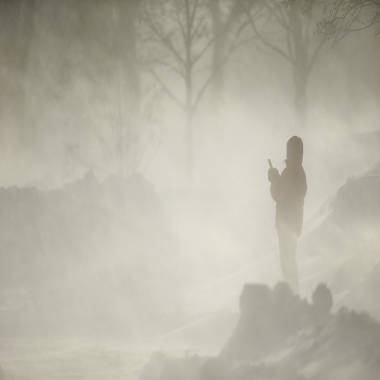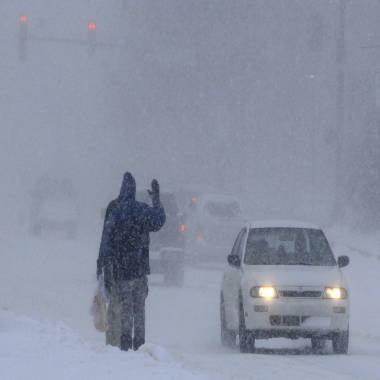As dangerous temperatures hit much of the nation, another deep freeze is moving in, making January the coldest month so far this century. NBC’s Dylan Dreyer reports.
By Erin McClam, Staff Writer, NBC News
The Deep South is the next target for the deep freeze in a winter that won’t quit.
Forecasters warned that ice could soon coat the front porches of Charleston, S.C., and Savannah, Ga., where winter storm alerts were posted Monday for the first time in almost four years.
At the same time, the Great Lakes shivered yet again under wind chills that approached 50 degrees below zero. The University of Minnesota and schools around Minneapolis closed for the day. Chicago closed school through Tuesday, and the city’s airports scrapped more than 500 flights.

Jeff Wheeler / The Star Tribune via AP
A woman walking around Lake Harriet in Minneapolis on Sunday pauses to shoot some video of the blowing snow.
“The North is suffering winter burnout,” said Tom Niziol, a winter weather expert for The Weather Channel. “The South is going to see some weather that many parts have not seen in years.”
For the South, forecasters said the worst of it would come Tuesday — a band of dangerous ice, threatening trees and power lines, from the coast of Texas to the coast of North Carolina.
Just to the north was the likelihood of snow. Atlanta and Charlotte, N.C., could see 3 inches or more, Columbia, S.C., 5 inches or more, and the Outer Banks of North Carolina as much as a foot.
Snow accumulation was possible in Houston, New Orleans and Mobile, Ala.
Up north, Minnesota took the brunt of the latest punishing blast of arctic air. Air temperatures dived lower than 20 below toward the Canadian border. Minneapolis woke up to 16 below, with a wind chill of minus 36.
Xcel Energy began telling about 100,000 customers in North Dakota, Minnesota and Wisconsin that they could crank their thermostats back up. They had been asked to keep their homes at 60 degrees after a natural-gas shortage caused by a pipeline explosion in Canada over the weekend.
Still, the Anoka-Hennepin school district said it was closing based on a warning from the National Weather Service that wind chills would be severe enough to freeze exposed skin in five to 10 minutes.
For some school districts, it was the fourth cold-related closing this year.

Jennifer Shephard / The Elkhart Truth via AP
A man waves to thank a passing car for giving them room on the road as he and a friend walk in Elkhart, Ind., during heavy snow on Saturday.
“We’ve had a few people calling and emailing, saying, ‘You know, it’s Minnesota, get used to it,’” Mary Olson, a spokeswoman for the Anoka-Hennepin schools, told NBC affiliate KARE. “But for the most part, people have been happy that we’ve closed.”
The Northeast got a break, relatively speaking, at least for a day. New York peeked above freezing on Monday morning, just enough to melt snow that has lingered on sidewalks since the middle of last week.
But the big cities of the Eastern Seaboard won’t be spared for long. The forecast low for Monday night was 9 degrees in New York, 9 degrees in Philadelphia, 10 in Boston and 13 in Washington.
This story was originally published on Mon Jan 27, 2014 7:59 AM EST
South may face a deep freeze
No comments:
Post a Comment